How do Tequila
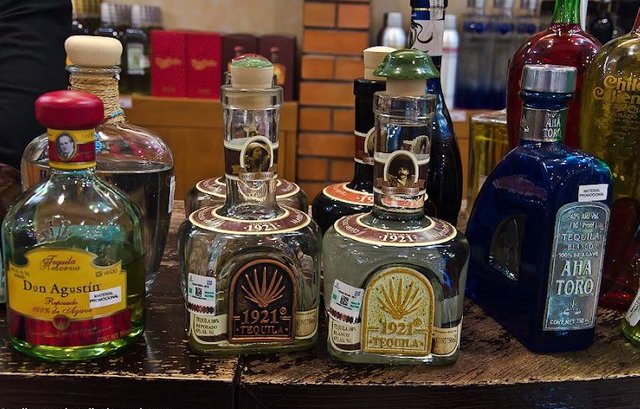
Today, many states on our planet have their traditional alcoholic beverage, forever associated with the spirit of the country itself. France is proud of its famous cognac, Cuba - rum, Russia - vodka, and Mexico produces a drink that is banned from production in absolutely all other states of the world - Mexican tequila.
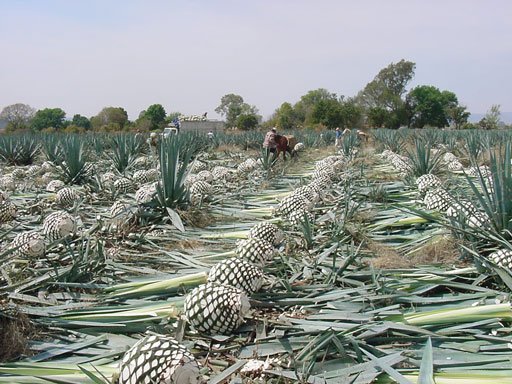
I think that many people know that this is "Mexican vodka", and tried the cheapest types of this drink in bars with lemon and salt. In fact, this tequila is drunk as a cognac, sensing the aroma and not washing down or snacking. Tequila as a drink appeared in the 17th century, and its name - the name of the eponymous city in the Mexican state of Jalisco. They say that verbatim from some dialect, this translates as "the place of payment of taxes."
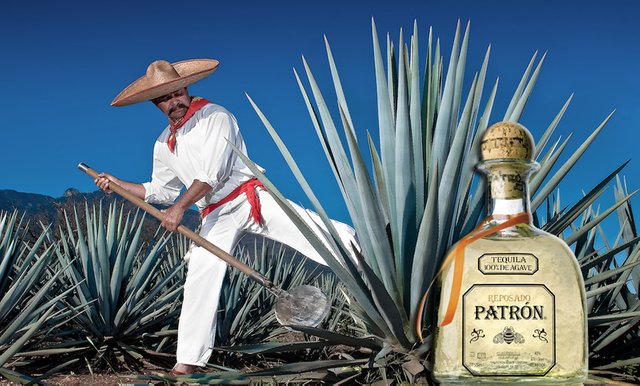
Tequila is made from agave, a huge number of species that grows in the territory of modern Mexico. There is even a special profession of a chimadour - a man who directly extracts and processes agave. But Tequila was invented by no means Maya - the indigenous inhabitants of southern Mexico, and the Spanish conquistadors. The Indians drank only the fermented agave juice - pulque, and only the Spaniards brought the technology of processing alcohol to the American continent. So the plants of the blue agave look, from which the tequila is made.
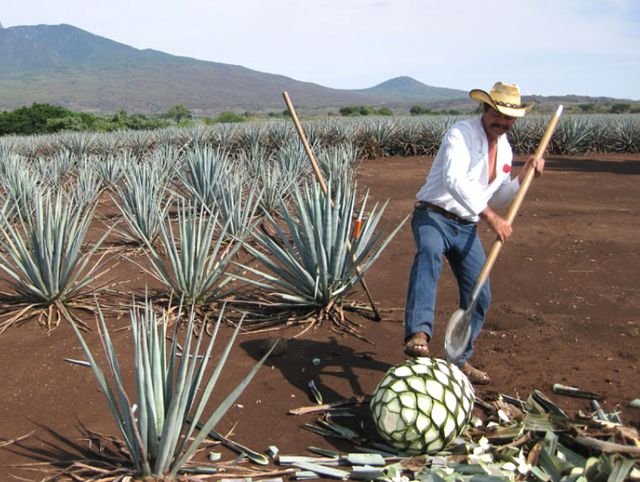
According to some sources, the plant should grow from 7 to 10 years before it can be used for the production of tequila, and for others, only after 12.
Only physically strong men are taken to Mexican ministries in Mexico, because they have to chop off the leaves of the agave all year round under the scorching sun, which give bitterness by means of a special shovel called koa and extract the core of the blue agave, called pigna (from Spanish - pineapple).

Himadors collect pinyas, then bake them in the stove. 1 bottle of tequila is obtained from approximately 9 kilograms of pinyi. After heat treatment, "pineapples" become softer and they begin to squeeze out the juice. The treatment lasts 46 hours, 26 hours directly in the oven and another 20 leave for cooling.

- If after the oven the pieces of pinyi are thinly cut, then it will look like this.
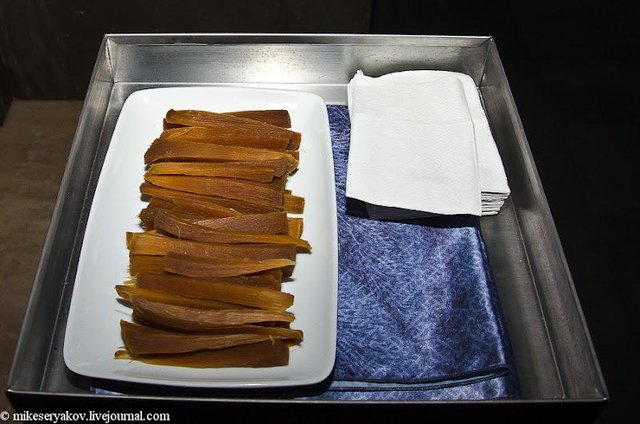
And to taste, they are very sweet and fibrous, they are easier to chew, squeezing out the juice from them, and spill the remnants, by analogy with sugar cane.
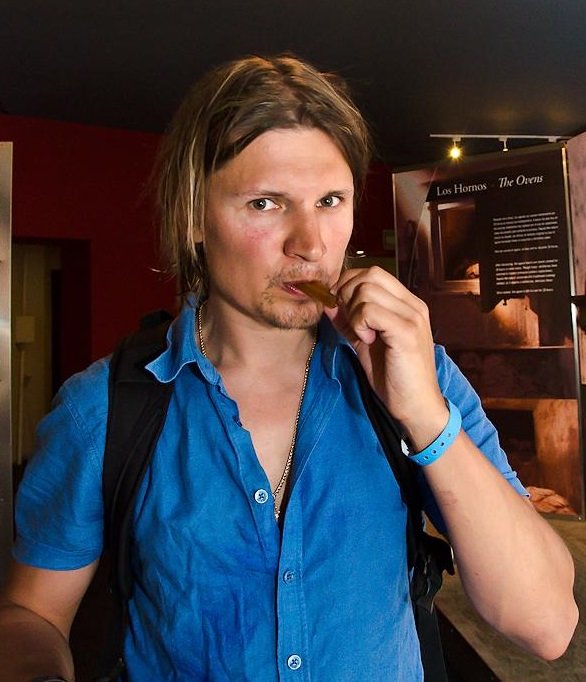
And to taste, they are very sweet and fibrous, they are easier to chew, squeezing out the juice from them, and spill the remnants, by analogy with sugar cane.
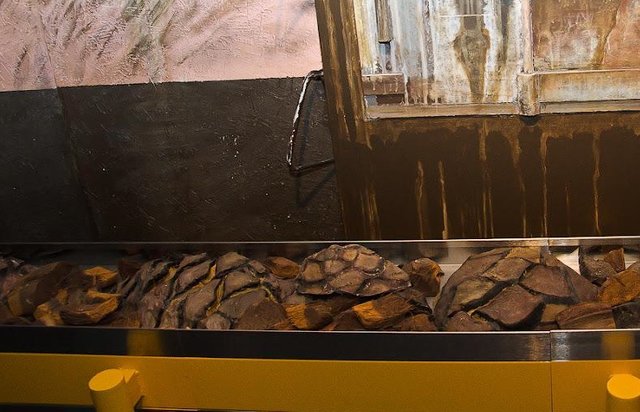
Baked piñas are cut, put on special tapes, and then squeezed out the juice.
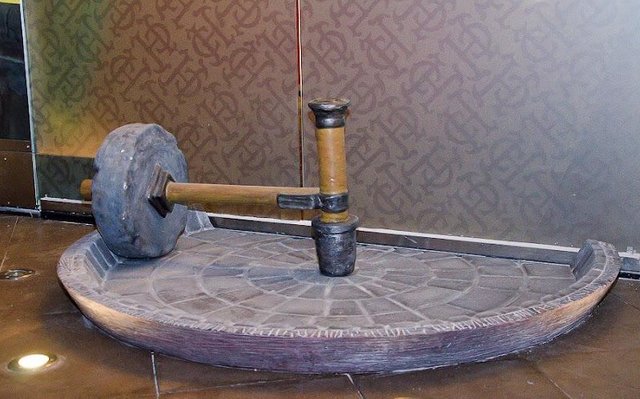
In antiquity, juice was squeezed like this with a simple device. They put pies on a "dish" and the horse or mule walked around in a circle and squeezed out the juice from the agave.
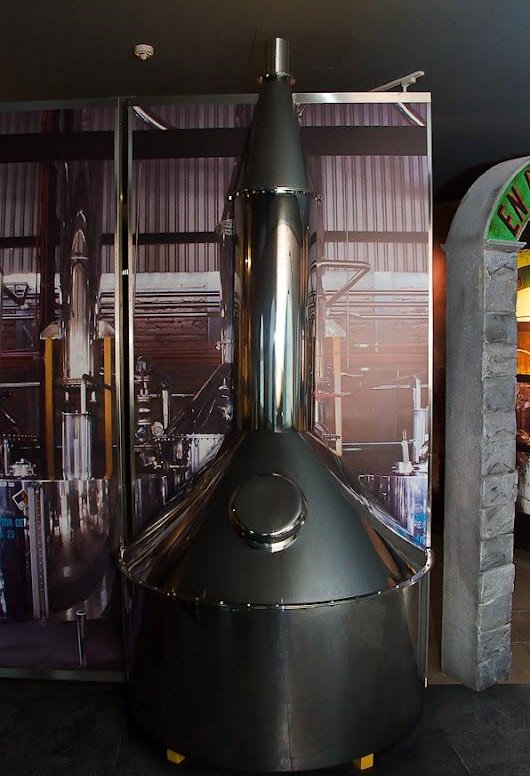
In agave juice add natural yeast from fruit trees to drink. Fermentation lasts 5 days, after which the agave juice is fermented with a strength of 5%. This is the pulque - the only alcoholic beverage of the indigenous people of Mexico. After that, the juice is subjected to primary distillation, for this it is poured into a special machine called an alembike or alumbic, "translating the Spanish variant into Russian".
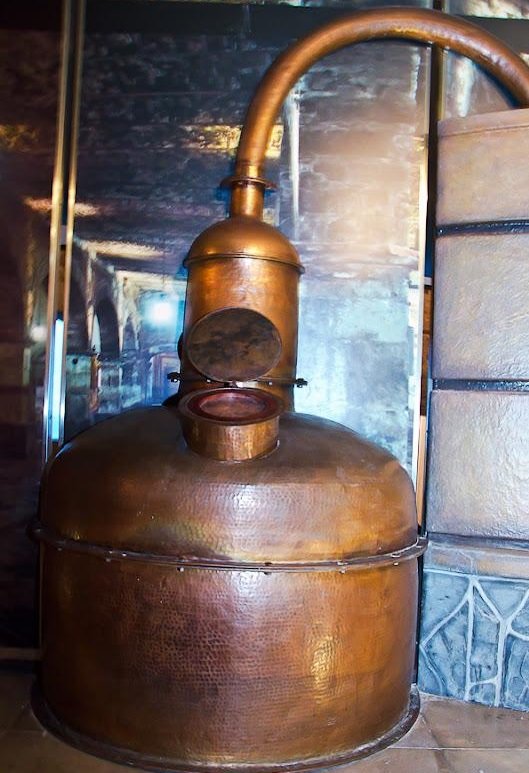
Earlier, the alembics were made of copper and looked like this.
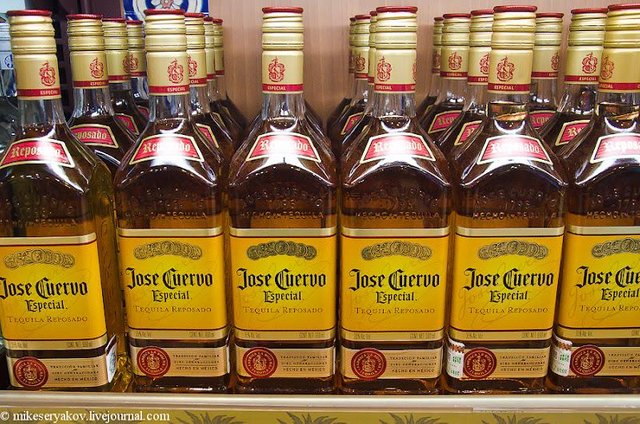
In this machine, the juice is heated to a temperature of -80 degrees Celsius. The top part of the machine is called the head - it separates ethanol and methanol. The middle part is called the heart (El Corazon) - the famous Spanish word, probably known to everyone, and the lower part is called the tail. Sewage accumulates in the tail. Distillation is always double. The first lasts 3 hours, and the second - 6 hours. After the second distillation, all the tequila is silver (blanca) - although it is literally translated as white, the name is obtained because of the color of the drink - it is transparent. Degree of the drink is about 55%, then add water, thereby reducing the strength of the drink to acceptable 38-40 degrees. Classically tequila can be divided into 2 types: 100% - agave and tequila - mixed. Mixto means that in tequila only 51% of agave, and everything else - additional substances, for example, cane sugar or corn syrup. All Mexicans with whom I communicated, while in Mexico, tequila mixedo do not recognize at all. In their opinion, 100% agave should be clearly written on the bottle, otherwise they will not drink this drink. While the most common tequila in Russia, which I saw before this "Olmeca" and "Sauza", are mixed, and my friends did not admit such tequila categorically. The more rare brand "Jose Cuervo" is also a tequila mixedo. Although it is one of the oldest brands of tequila, its founder Jose Maria Cuervo received a license for the production of tequila, already in 1795.
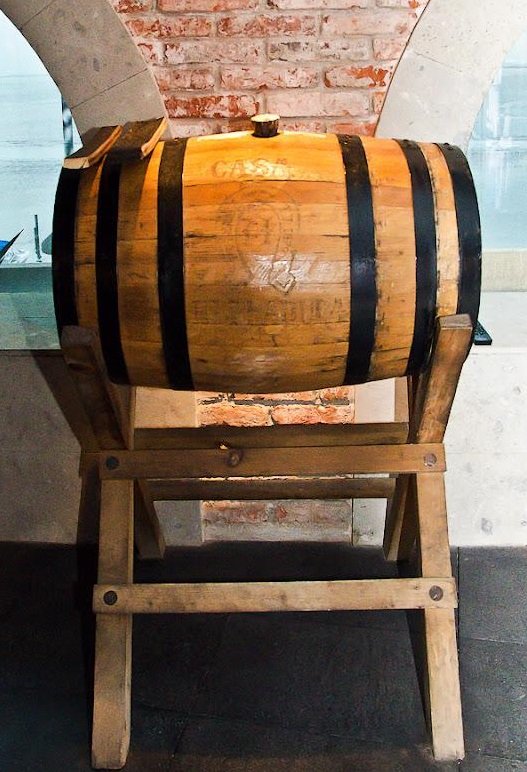
Some of the beverage obtained after the second distillation is bottled and labeled as "Tequila blanco", and some is aged in white oak barrels to obtain more expensive and seasoned varieties.
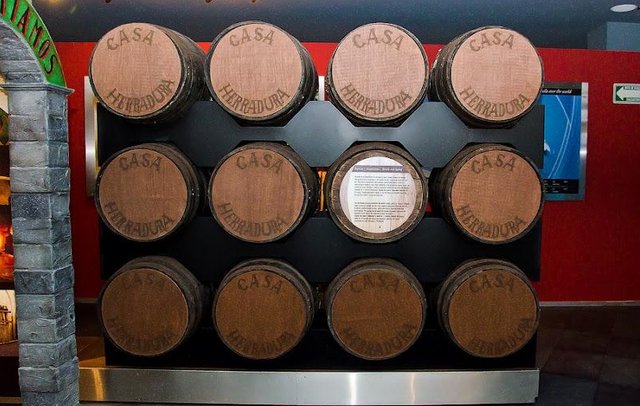
Each barrel costs about 200,000 Mexican pesos, or about 15,000 equivalent US dollars.
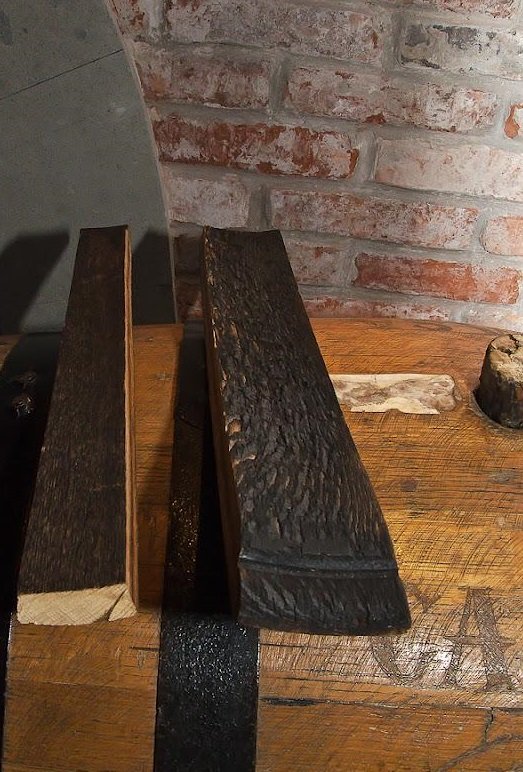
The barrel is fired, and the tree from the inside looks like this.
Each such barrel can only be used 5 times, because after each use, the "burned tree" is scraped off and fired again for the next time. It is the barrels made of white oak and give the aged tequila a yellowish shade.
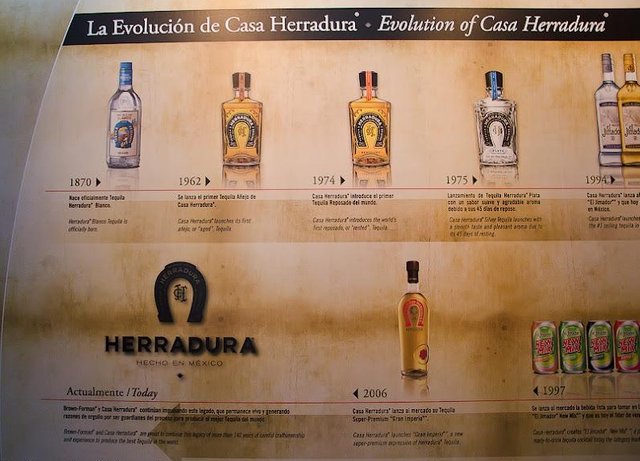
Now you can talk about the complete classification of the tequila:
1). Blanca, as a rule not completely seasoned, transparent to color, or plata - aged in barrels to 60 days and having a hardly visible yellowish tinge.
2). Mixto Gold - almost the same drink as blanca, but only with the addition of additives that impart color.
3). Reposado (rested) - tequila, aged in oak barrels from 2 to 11 months.
4). Anejo (old) - an excerpt from 1 to 3 years.
5). Extra anejo - excerpt from 3 years or more.
The latter I would compare with French cognac extracts "XO".
To date, tequila is allowed only in Mexico, and not in the whole territory, but only in the main state of Jalisco, as well as in four adjacent states: Guanajuato, Michoacán, Tamaulipas and Nayarit. Mexico exports tequila to 135 countries, and the rest of the countries receive tequila through the countries selected by Mexico as "distributors".
The most sold tequila in Mexico 2 years ago was a brand of tequila "Herradura Reposado".
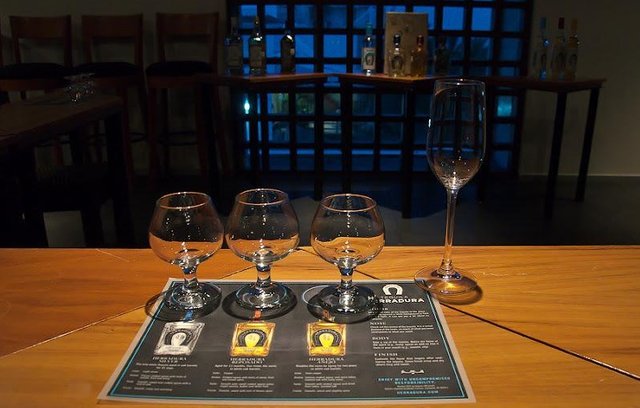
Tequila is usually drunk with high and narrow glasses called "caballitos", but it is impossible to taste tequila from them, because you can not feel the fragrance. Therefore, for wine tasting and enjoying tequila, glasses like cognac are used.
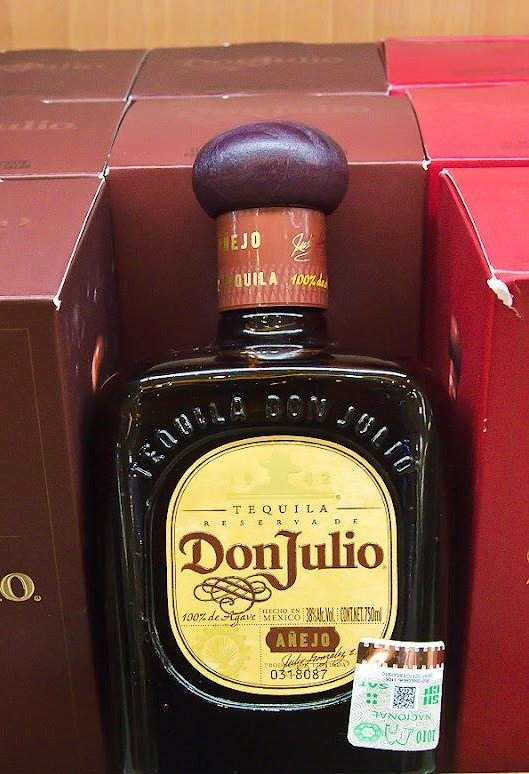
It is believed that if a good tequila is poured into their hands and then wiped, then after a few seconds the smell of alcohol will disappear and only the smell of the agave will remain. If the tequila of the blank is good, then it must be absolutely clear and transparent without the interspersion of black points, if any is present, it means a bad distillation. In general it is Tequila Blanco and drink with lime and salt, add to cocktails such as "Tequila Boom" or "Tequila SunRise", more aged varieties are recommended to drink only in pure form so that you can enjoy the noble taste of the drink. Still, Mexicans say that they drink tequila blanco before meals, reposado while eating, and aniejo after a meal.

Speaking about the brands of this drink, I was told that the most popular in Mexico are such brands as "Don Julio", "Herradura" (translated from the Spanish "horseshoe") and "1800 anos". All these drinks are naturally 100% made from blue agave.
